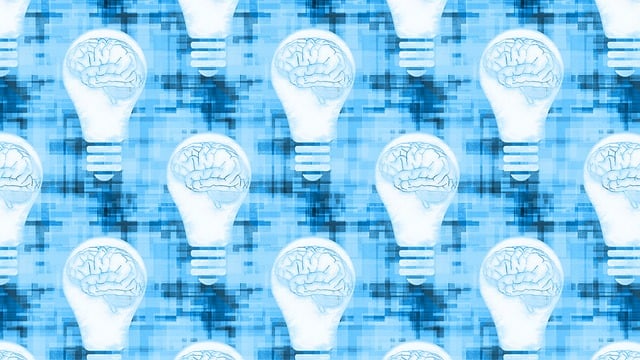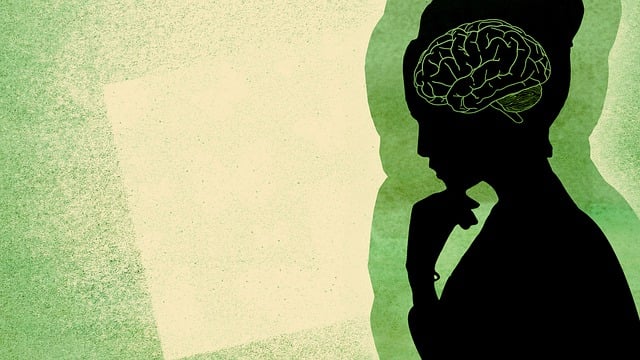Psychoanalysis and psychodynamic therapy are pioneering approaches to mental health psychotherapy, focusing on the unconscious mind as a root cause of psychological distress. Founded by Sigmund Freud, these theories emphasize the impact of subconscious desires, memories, and experiences on thoughts and behaviors. Techniques such as free association, dream analysis, and transference help patients bring hidden thoughts to consciousness, revealing repressed memories or traumatic events contributing to current issues. This process enables profound insights, resolves internal conflicts, enhances self-awareness, and drives positive changes in clients' lives. These therapies explore the relationship between past experiences—conscious and unconscious—and present behaviors, with a focus on early childhood and interpersonal relationships. Key concepts include ego, id, and superego, and interpretation of dreams, slip-of-the-tongue errors, and actions as access points to the unconscious. By facilitating introspection, these therapies aid in understanding thought patterns, leading to personal growth, improved decision-making, and better emotional regulation—crucial aspects of mental health psychotherapy.
Psychoanalysis and psychodynamic therapy are enduring pillars in the realm of mental health psychotherapy, offering profound insights into the unconscious mind. This comprehensive guide delves into the intricate history, core principles, and diverse techniques that define these therapeutic approaches. From exploring dreams and free association to navigating transference and countertransference, we unravel the inner world of patients, fostering deeper understanding and healing. Discover how psychodynamic therapy continues to shape modern mental health practice, considering its benefits, limitations, and potential for future growth.
Understanding Psychoanalysis: Unraveling the Unconscious Mind

Psychoanalysis, a cornerstone in the realm of mental health psychotherapy, is a therapeutic approach that delves deep into the unconscious mind. Founded by Sigmund Freud, this theory posits that our thoughts, feelings, and behaviors are largely influenced by subconscious desires, memories, and experiences. By exploring these hidden aspects, psychoanalysts aim to unravel the complex web of conflicts and tensions that often underlie psychological distress.
Through various techniques such as free association, dream analysis, and transference, therapists encourage patients to bring their unconscious thoughts into consciousness. This process allows for a deeper understanding of one’s mental processes, identifying repressed memories, desires, or traumatic events that may be contributing to current psychological issues. By gaining insight into these hidden elements, individuals can work towards resolving internal conflicts, improving self-awareness, and fostering positive changes in their lives.
The Roots of Psychodynamic Therapy: A Historical Perspective

Psychodynamic therapy, a cornerstone of modern mental health psychotherapy, traces its roots back to the groundbreaking work of Sigmund Freud in the late 19th and early 20th centuries. Freud’s theories on the unconscious mind and its influence on behavior laid the foundation for this therapeutic approach. He believed that our past experiences, particularly childhood ones, shape our personality and contribute to psychological issues we may face later in life. This concept, known as psychodynamic theory, revolutionized the understanding of mental health, shifting the focus from symptoms to the underlying causes rooted in early life events and interpersonal relationships.
Freud’s ideas evolved over time, leading to various schools of thought within psychodynamic therapy. His initial theories on dream analysis and the interpretation of slips and lapses were further developed by his followers, who explored concepts like defense mechanisms, transference, and the importance of the therapeutic relationship. This historical perspective highlights how psychodynamic therapy has grown and adapted, offering valuable insights into the complex nature of the human mind and its impact on our mental health.
Key Concepts and Principles of Psychodynamic Approach

The psychodynamic approach in mental health psychotherapy is rooted in the theory that our past experiences, both conscious and unconscious, significantly shape our present behaviors and emotions. This therapy type delves into the intricate relationship between the mind and behavior, focusing on the role of early childhood experiences, repressed memories, and internal conflicts. Key concepts include the existence of the ego, id, and superego—the mental structures that govern our thoughts, desires, and moral guidelines.
Psychodynamic therapy emphasizes the importance of understanding and interpreting dreams, slip-of-the-tongue errors, and seemingly insignificant actions as windows into the unconscious mind. Through techniques like free association and transference analysis, therapists aim to help clients gain awareness of their underlying motivations, defend against negative emotions, and resolve internal conflicts that may be hindering their mental health and overall well-being.
Techniques Used in Psychoanalysis and Their Impact

In psychoanalysis, a profound therapeutic approach, analysts employ diverse techniques to unravel the intricate web of the client’s mind. Central to this process is free association, where patients are encouraged to express their thoughts and feelings without censorship, allowing for the emergence of unconscious material. This technique, coupled with dream analysis, enables therapists to interpret symbols and uncover repressed memories or desires. Through these methods, psychoanalysts aim to facilitate introspection, promote self-awareness, and bring latent conflicts into the conscious realm.
The impact of these techniques is significant in mental health psychotherapy. By exploring past experiences, relationships, and emotions, individuals gain valuable insights into their behaviors and thought patterns. This increased awareness can lead to profound personal growth, improved decision-making, and enhanced overall well-being. Moreover, psychoanalytic therapy empowers clients to develop healthier coping mechanisms, fostering better emotional regulation and resilience in their daily lives.
Exploring the Inner World: Dreams, Free Association, and Resistance

Exploring the inner world is a key aspect of psychoanalysis and psychodynamic therapy, providing profound insights into an individual’s mental health and psyche. Through techniques like dream analysis and free association, therapists encourage clients to delve into their subconscious thoughts and feelings. Dreams, often seen as a window to the unconscious, reveal hidden desires, fears, and memories that shape our behaviors and emotions. By interpreting these dreams, therapists help individuals understand the symbolic meanings behind them, offering valuable clues about underlying mental health issues.
Free association, another powerful tool, involves expressing thoughts and feelings without censorship or structure. This process helps uncover repressed memories, desires, and conflicts. Therapists listen attentively, identifying patterns and connections that might not be immediately apparent to the client. Resistance, a common phenomenon during therapy, can manifest as reluctance to discuss certain topics or recall specific memories. Recognizing and addressing resistance is crucial, as it often points to areas of the psyche that require deeper exploration and potential conflicts that need resolution in mental health psychotherapy.
Transference and Countertransference: Navigating the Therapeutic Relationship

In psychoanalysis and psychodynamic therapy, transference and countertransference are crucial dynamics that shape the therapeutic relationship. Transference occurs when patients project feelings, expectations, and memories from past relationships onto their therapist, often unconsciously. This complex process can reveal deep-seated issues and provide insights into a patient’s emotional patterns. For instance, a patient might unconsciously act out childhood conflicts in the therapy room, allowing the therapist to explore and help resolve these repressed dynamics.
Countertransference, on the other hand, refers to the therapist’s emotional responses to the patient. Therapists may experience a range of feelings, from empathy to resistance, shaped by their own past experiences and unconscious biases. Effective therapists learn to manage these countertransferential reactions, ensuring they do not hinder treatment. By acknowledging and navigating both transference and countertransference, mental health psychotherapy becomes a powerful tool for self-discovery and healing, fostering a deeper understanding between therapist and patient.
Applications of Psychodynamic Therapy in Modern Mental Health Practice

Psychodynamic therapy, a descendant of psychoanalysis, continues to find relevant applications in modern mental health practice. This therapeutic approach focuses on the interaction between conscious and unconscious thoughts, emotions, and memories, believing that past experiences and early relationships significantly influence current behaviors and mental health issues. By exploring these dynamics, psychodynamic psychotherapy aids individuals in gaining deeper insights into their emotional struggles, defense mechanisms, and interpersonal patterns.
In today’s context, this therapy is valuable for treating various conditions such as depression, anxiety disorders, personality disorders, and relationship problems. It helps clients understand the underlying causes of their distress, often revealing hidden conflicts or unresolved issues from childhood. Through free association, dream analysis, and transference, therapists facilitate a process where individuals can confront and resolve these unspoken conflicts, leading to improved mental well-being and enhanced self-awareness.
Benefits and Limitations: Considering Different Viewpoints

Psychoanalysis and psychodynamic therapy offer profound insights into the human mind, with numerous benefits for those seeking to understand and overcome mental health challenges. One of their key strengths lies in exploring unconscious thoughts and emotions, which can be highly effective in treating complex issues such as depression, anxiety disorders, and personality conflicts. By delving into early childhood experiences, relationships, and defensive mechanisms, therapists can help individuals gain a deeper awareness of themselves, leading to significant personal growth and improved well-being.
However, these therapeutic approaches also have limitations. Critics argue that psychoanalysis can be time-consuming and expensive, requiring a lengthy commitment from both the therapist and client. Furthermore, some clients may find the focus on past experiences and emotions challenging or uncomfortable. While psychodynamic therapy excels in addressing deep-seated issues, it might not be as effective for those seeking quick relief or more practical strategies for coping with everyday stressors. Balancing these viewpoints is essential to understanding how psychoanalysis and psychodynamic therapy can best serve individuals navigating their mental health journeys.
Future of Psychoanalysis and Its Role in Contemporary Psychotherapy

In the evolving landscape of mental health psychotherapy, psychoanalysis continues to be a significant and influential approach. Despite being developed over a century ago, its relevance in contemporary therapy remains strong, offering unique insights into the complex human mind. The future of psychoanalysis lies in its ability to adapt and integrate with newer therapeutic modalities while preserving its core principles.
As mental health psychotherapy diversifies to meet the needs of a wide range of individuals and cultural contexts, psychoanalytic techniques can play a pivotal role in enhancing treatment outcomes. Its focus on unconscious processes, early childhood experiences, and interpersonal relationships provides a deep understanding of the patient’s psyche. This comprehensive approach allows therapists to address not just symptoms but also the underlying causes, fostering lasting changes and improvements in mental well-being.
